AHAMAD IBN YUSUF, al-Tayfãsî. Azhār al-afkār fī ğawāhir al-ahğār by Ahmad ibn Yūsuf al-Tīfāšī […] Fior di pensieri sulle pietre preziose di Ahmed Teifascite, opera stampata nel suo originale arabo, colla traduzione italiana appresso, e diverse note di Antonio Raineri
Florence, Imp. e R. Tipografia Orientale Mediceo-Laurenziana., 1818.Folio (281 x 205 mm.); (2 bb); [62], 1-10; (2 bb.); 11-118, [2 for errata]. The dedication copy for Pope Leo XII (Annibale Sermattei of the Counts of Genga). An unusually handsome neoclassical binding by the Vatican Bindery. Contemporary binding: light-brown polished calf, both covers with a series of degrading frames made of seven different fillets or by roll-tooled gilt borders that frame the central panel. Inside the field there is a first border made of intertwined floral elements, at the corners four large fans with lanceolate tools, in the central panel the Pope's coat of arms is imprinted in gold surmounted by the Triregnum and surrounded by a rich floral decoration and small stars. The six-compartment spine features the title in one while the others are closely gilt with small tools of four different types, liners and endleaves of marbled paper, gilt edges.
Excellent and fresh copy.
First edition of the most important Arab lapidary. The author Ahamad Ibn Yusuf al-Tayfāsī, born in 1184 in Tifâche in Tunisia and died in 1253 in Cairo, was a geology scholar and merchant, poet and anthologist. He is best known for his lapidary, the most famous and complete treatise of the Middle Ages on minerals and gems (precious stones). To write it, the author traveled mainly to Armenia, Persia, Turkmenistan, India, Andalusia and Mesopotamia. Making use of the knowledge of the local populations, he compiled a description for each stone containing the physical-chemical characteristics, analyzing their color, market value, medical and magical uses, the best methods for preserving them, also providing some Persian etymologies, and an indication of the places of origin and extraction. The treatise lists and illustrates 25 stones, also drawing up a classification according to the current price scale of the time. The precious gems are described according to the order of importance, respectively: ruby, emerald, diamond, spinel, cat's eye, sapphire, zircon, yellow corundum etc... The author delves into in learned quotations, technical observations, experiments, memories, dialogues with merchants, sailors and jewelers providing a vivid insight.
The translation from Arabic is by Antonio Ranieri Biscia (1780-1836). He completed his high school studies at the Classe college in Ravenna. His classical studies were accompanied by the learning of the main European languages: French, German, English and Spanish. This represented for him access to the growing bibliography around the history and literature of the Near and Middle East, which Raineri Biscia also worked hard to learn the local languages “without the help of a tutor.” Instead, he managed to overcome family resistance, and left in 1804 for a journey of a few years, getting to know Greece, Istanbul, the Asian part of Ottoman Turkey, Persia, then the Arabian peninsula up to the south-western end, then the Egypt and Sudan, going up the Nile, up to Ethiopia, the last stop. Here, in Gondar, he was imprisoned for defaulting on some debts. He was freed thanks to the intervention of an Ethiopian woman, daughter of a local Ras, who paid his debts by selling her jewels. The young woman also offered Raineri the money to embark for Great Britain, from where, having received money from his family, he sent the loaned sum back to the girl, with the gift of a small diamond cross. Upon returning to Italy, he settled in Dovadola (Forlì), in the possessions inherited from the Biscia family. From here he could easily reach Florence, where he continued his study of oriental languages, dedicating himself to reading manuscript works in the Biblioteca Laurenziana.
According to his eulogy, Raineri knew Hebrew and Arabic, Assyrian and Chaldean (Syriac), Persian and Turkish at this time. Taken in esteem by the Grand Duke of Tuscany Leopold II, he became a consultant for the reforms, as well as a professor of oriental languages at the University of Pisa. In 1818, Raineri Biscia published his most important and celebrated work: the edition of the Arabic text with an Italian version of the work Azhār alafkār fī ğawāhir al-ahğār by Ahmad ibn Yūsuf al-Tīfāšī, published bilingually with the Italian title of Fior di pensieri su le pietre preziose [...]. The Arabic text of the work was copied by Raineri from the Or manuscript. 368 in the Biblioteca Laurenziana of Florence.
To print the Arabic text, the types that had been designed by Giovanni Battista Raimondi for the Typographia Medicea commissioned by Pope Gregory XIII and financed by Cardinal Ferdinando de' Medici, future Grand Duke of Tuscany, were used. The Medici types had landed at the Laurenziana after a tortuous path, and in order to use them for the volume edited by Raineri, a new press was set up, which is now still present in the library.
Sinkankis 6557; Tifashi 1999; Astori 2000; “L'arte contesa nell'età di Napoleone, Pio VII e Canova, Silvana Ed.2009, p. 246, form n. 6.30.
Other Books
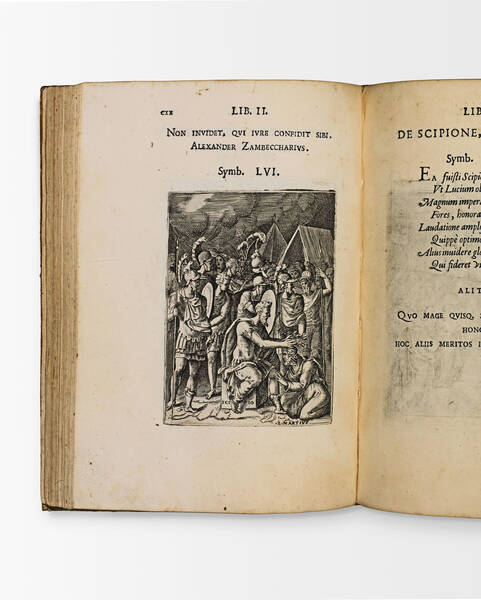
BOCCHI, Achille
Symbolicarum quaestionum, de universo genere quas serio ludebat, libri quinque.
SOLD OUT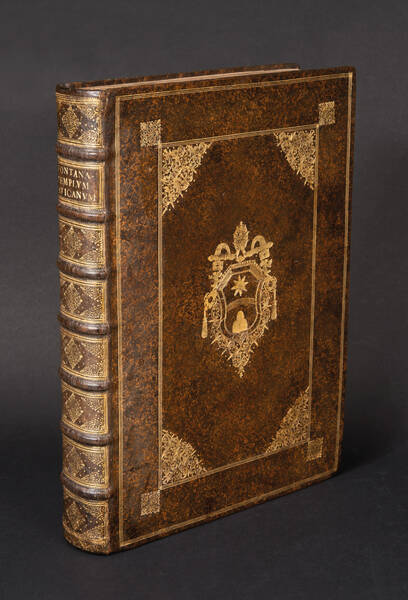
FONTANA, Carlo
Templum Vaticanum et ipsius origo cum aedificiis maximè conspicuis antiquitùs, & recèns ibidem constitutis; editum ab equite Carolo Fontana ... opus...
€ 38.000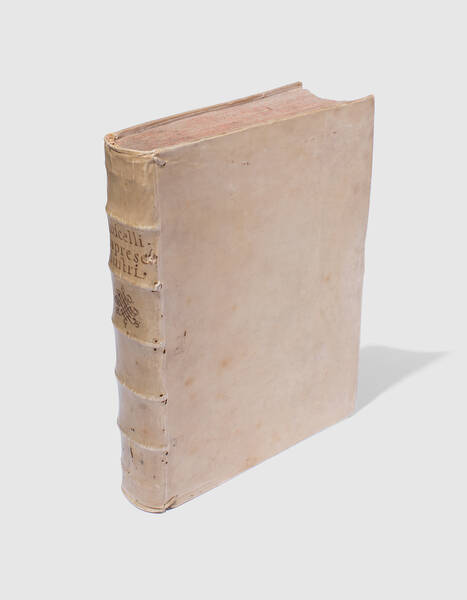
RUSCELLI, Gerolamo
Le imprese illustri con espositioni, et discorsi del s.or Ieronimo Ruscelli.
SOLD OUT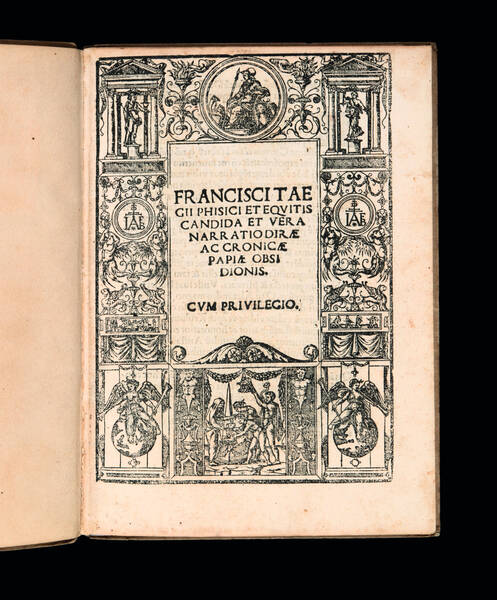
TAEGIO, Francesco
Frencisci Taegii phisici et equitis Candida et vera narratio dirae ac cronicae Papiae obsidionis.
€ 30.000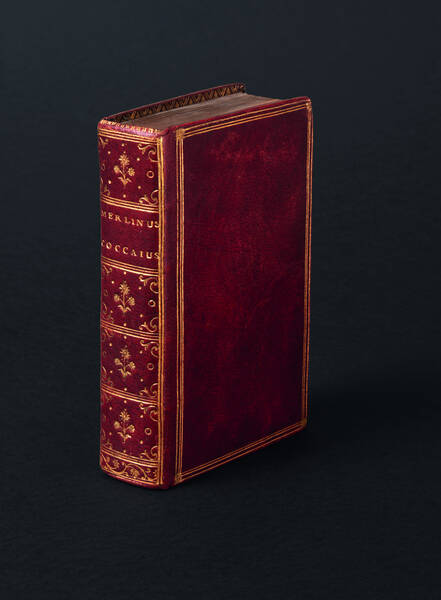
FOLENGO, Teofilo
Opus Merlini Cocaii poetae Mantuani Macaronicorum, totum in pristinam formam per me magistrum Acquarium Lodolam optime redactum in his infra notatis...
€ 11.000[BIBLIA ARABICA]
Evangelium Sanctum Domini nostri Iesu Christi conscriptum a quatuor Evangelistis sanctis, id est Matthaeo, Marco, Luca et Iohanne.
€ 15.000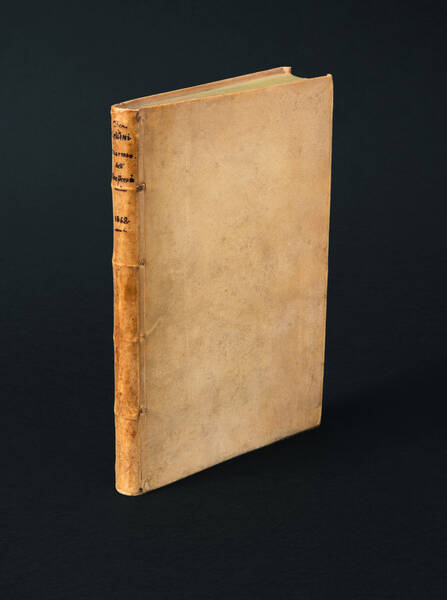
CELLINI, Benvenuto
Due trattati vno intorno alle otto principali arti dell'oreficeria. L'altro in materia dell'arte della scultura; doue si veggono infiniti segreti nel...
€ 12.000MEDA RIQUIER rare books ltd.
4 Bury Street St James's
SW1Y 6AB London
Phone +44 (0) 7770457377
info@medariquier.com
![Azhār al-afkār fī ğawāhir al-ahğār by Ahmad ibn Yūsuf al-Tīfāšī […]Fior di pensieri sulle pietre preziose di Ahmed Teifascite, opera stampata nel suooriginale arabo, colla traduzione italiana appresso, e diverse note di AntonioRaineri Azhār al-afkār fī ğawāhir al-ahğār by Ahmad ibn Yūsuf al-Tīfāšī […]Fior di pensieri sulle pietre preziose di Ahmed Teifascite, opera stampata nel suooriginale arabo, colla traduzione italiana appresso, e diverse note di AntonioRaineri](https://www.medariquier.com/typo3temp/pics/41e2a82329.jpg)
![Azhār al-afkār fī ğawāhir al-ahğār by Ahmad ibn Yūsuf al-Tīfāšī […]Fior di pensieri sulle pietre preziose di Ahmed Teifascite, opera stampata nel suooriginale arabo, colla traduzione italiana appresso, e diverse note di AntonioRaineri Azhār al-afkār fī ğawāhir al-ahğār by Ahmad ibn Yūsuf al-Tīfāšī […]Fior di pensieri sulle pietre preziose di Ahmed Teifascite, opera stampata nel suooriginale arabo, colla traduzione italiana appresso, e diverse note di AntonioRaineri](https://www.medariquier.com/typo3temp/pics/66e0694c81.jpg)
![Azhār al-afkār fī ğawāhir al-ahğār by Ahmad ibn Yūsuf al-Tīfāšī […]Fior di pensieri sulle pietre preziose di Ahmed Teifascite, opera stampata nel suooriginale arabo, colla traduzione italiana appresso, e diverse note di AntonioRaineri Azhār al-afkār fī ğawāhir al-ahğār by Ahmad ibn Yūsuf al-Tīfāšī […]Fior di pensieri sulle pietre preziose di Ahmed Teifascite, opera stampata nel suooriginale arabo, colla traduzione italiana appresso, e diverse note di AntonioRaineri](https://www.medariquier.com/typo3temp/pics/2ade66bc82.jpg)
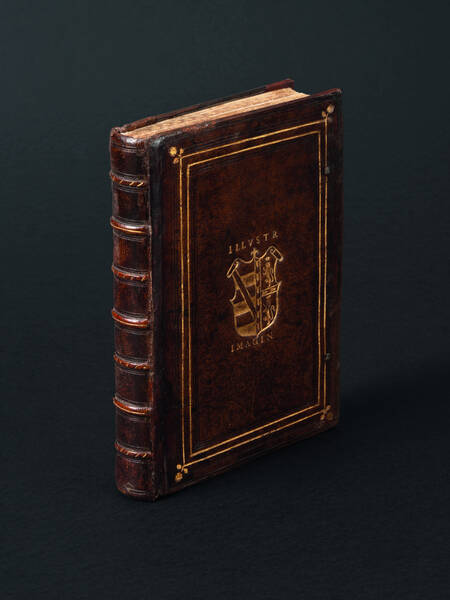
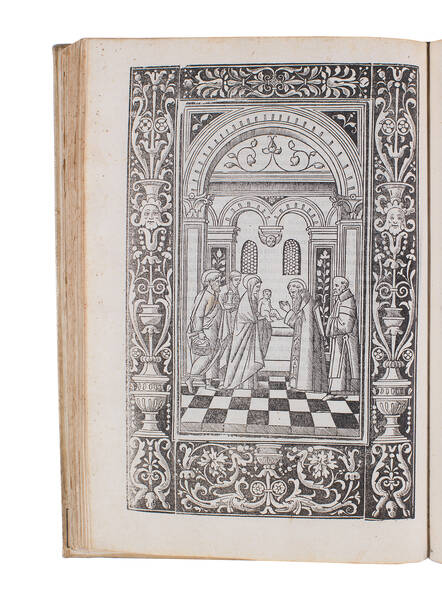
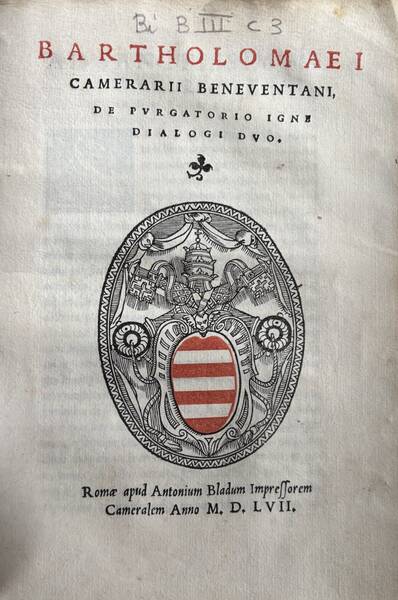
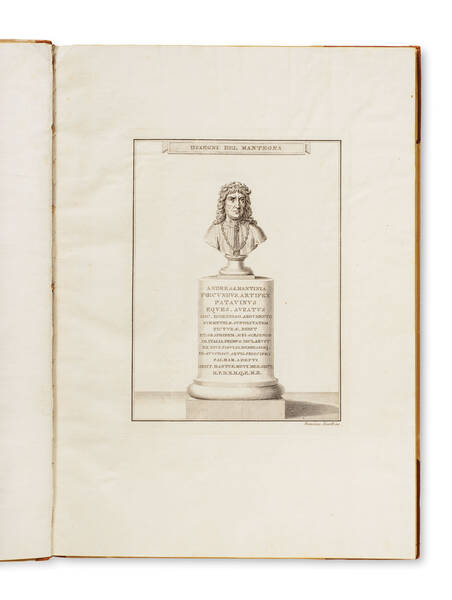
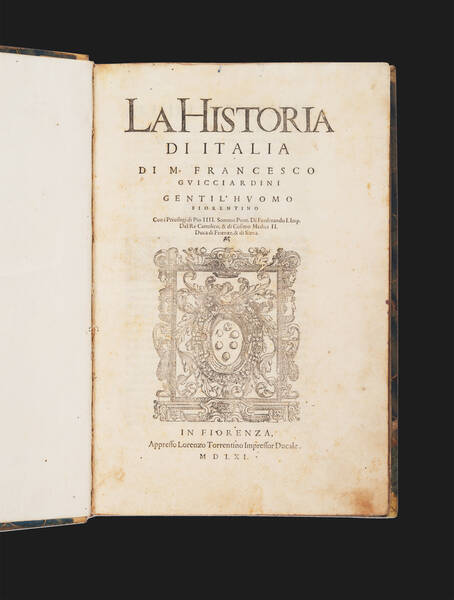

![Opera posthuma [Compendium grammatices linguae hebraeae]. Opera posthuma [Compendium grammatices linguae hebraeae].](https://www.medariquier.com/typo3temp/pics/9e46dbc214.jpg)
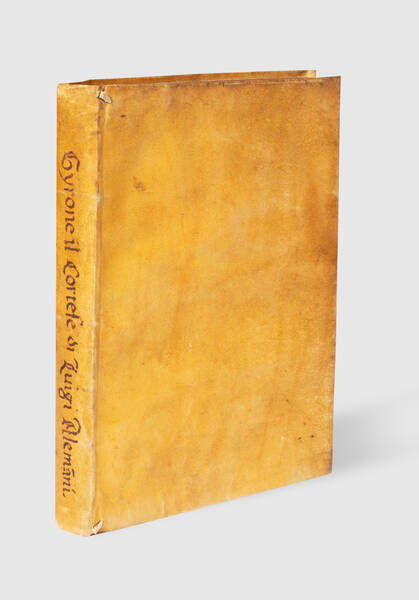
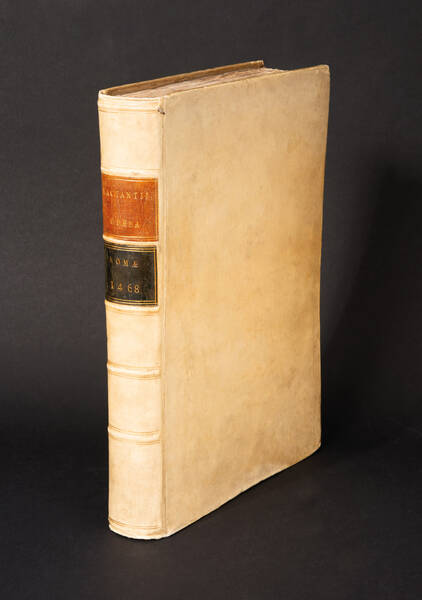

![[The Commentaries.] C. Julii Cæsaris Quae Extant. Accuratissimè cum Libris Editis & MSS optimis Collata, Recognita & Correcta. Accesserunt Annotationes Samuelis Clarke. S.T.P. Item Indices Locorum, Rerumque & Verborum Utilissimæ. Tabulis Æneis Ornata. [The Commentaries.] C. Julii Cæsaris Quae Extant. Accuratissimè cum Libris Editis & MSS optimis Collata, Recognita & Correcta. Accesserunt Annotationes Samuelis Clarke. S.T.P. Item Indices Locorum, Rerumque & Verborum Utilissimæ. Tabulis Æneis Ornata.](https://www.medariquier.com/typo3temp/pics/e0a4828aa4.jpeg)